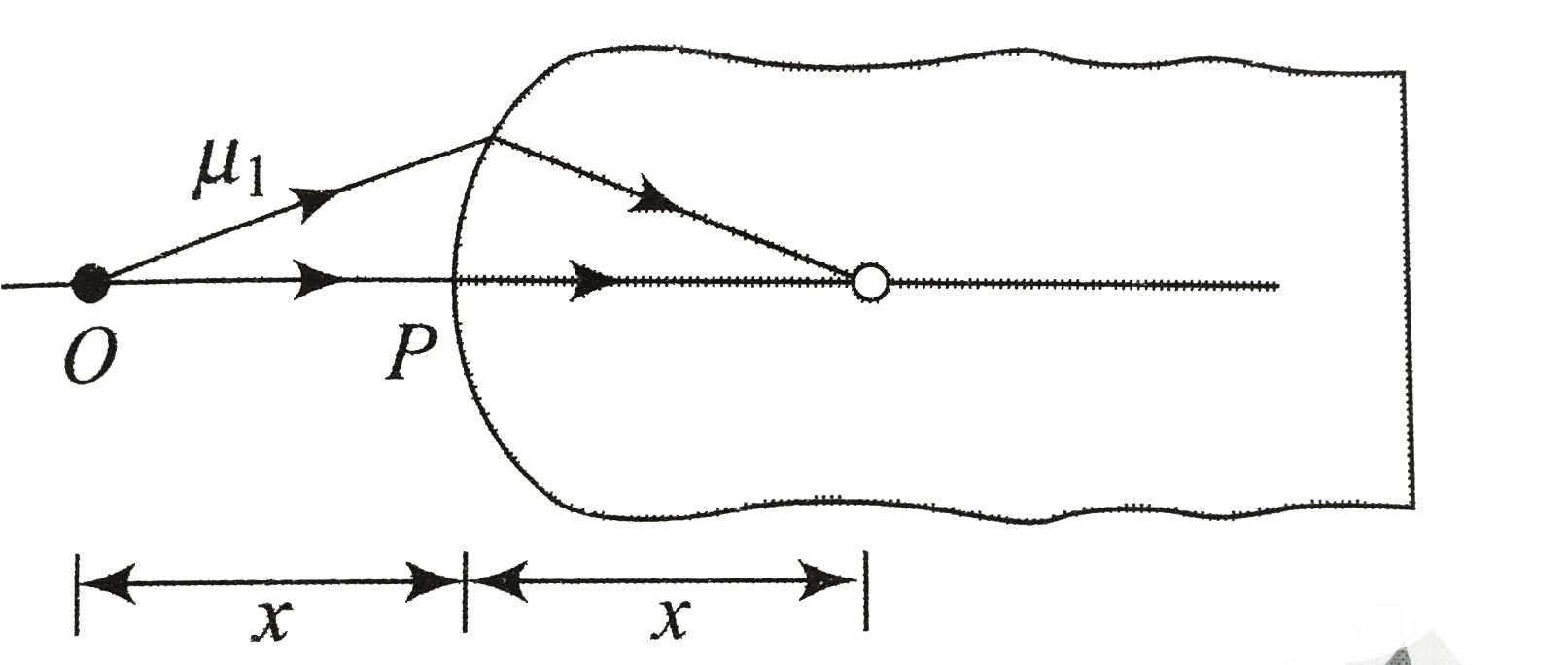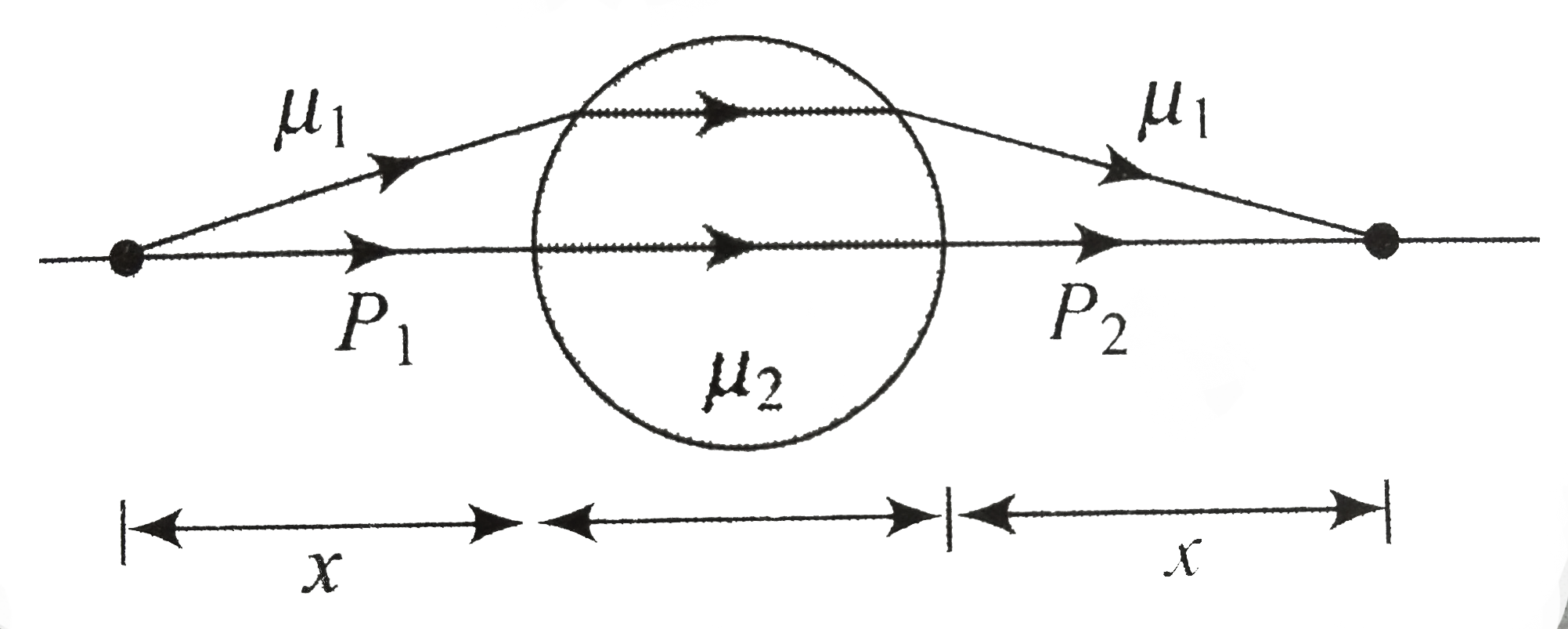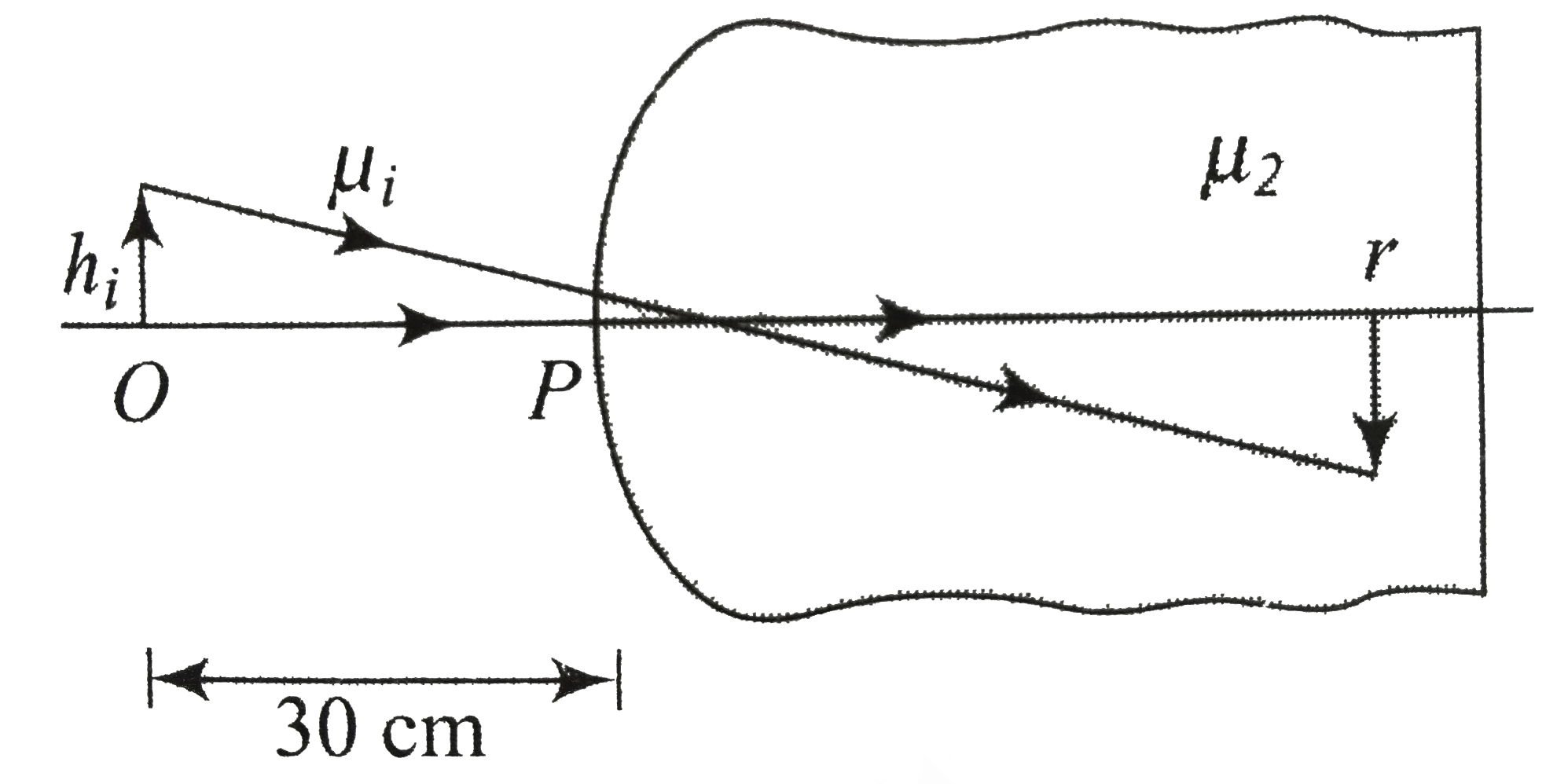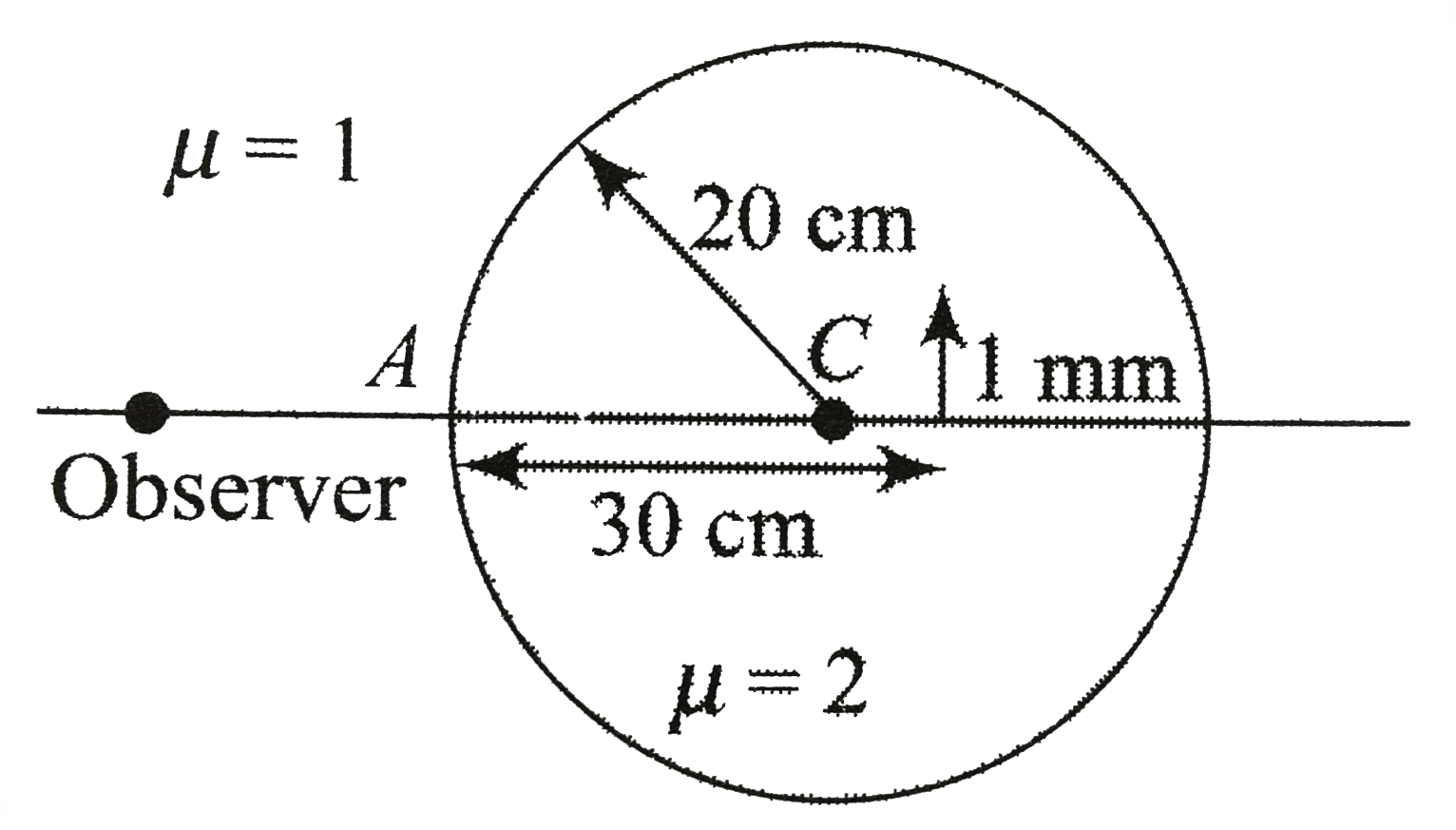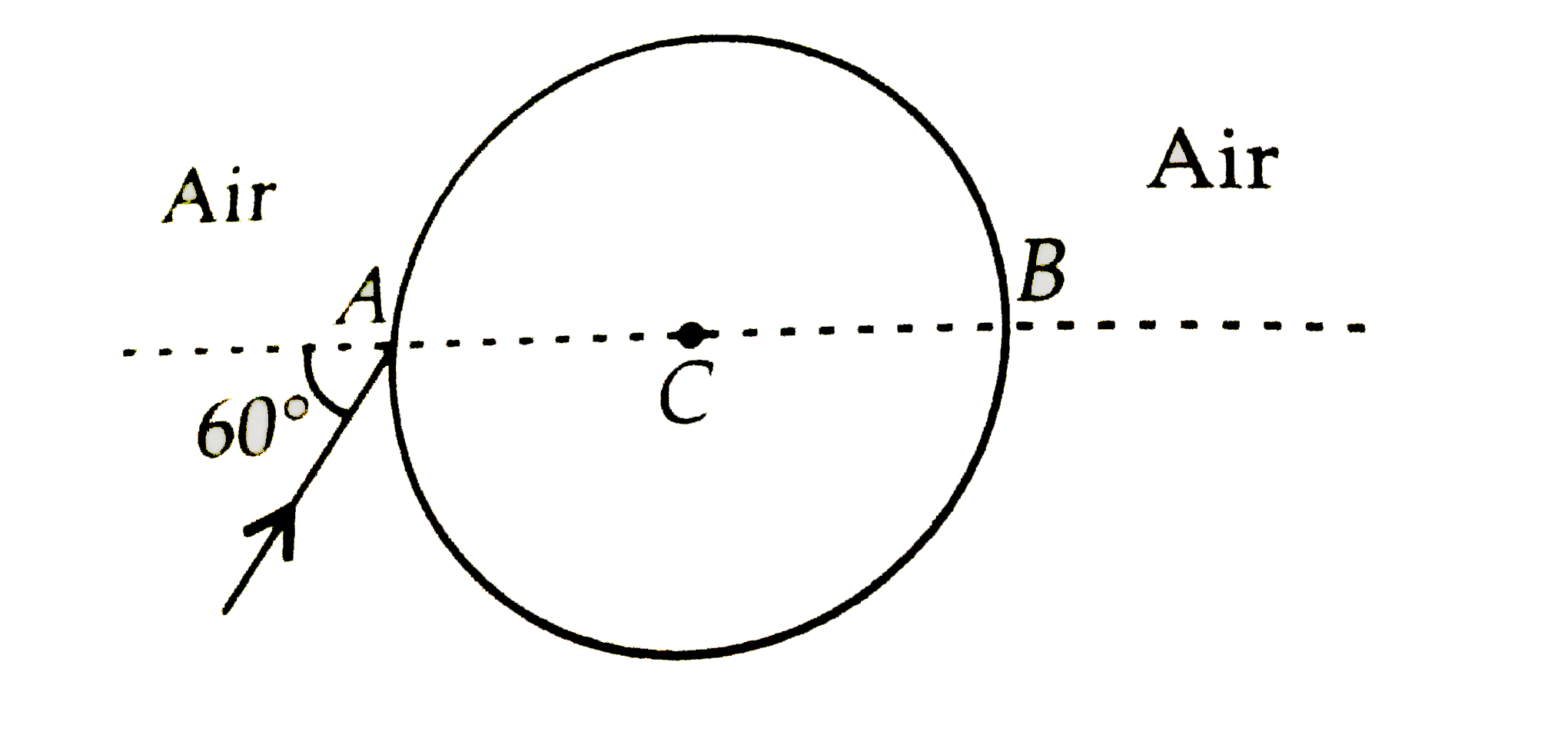Exercise1.5 from CENGAGE PHYSICS (ENGLISH) Chapter 13 GEOMETRICAL OPTICS for Class 12
| Class 12 | PHYSICS |
| Chapter | GEOMETRICAL OPTICS |
| CENGAGE PHYSICS (ENGLISH) | Exercise1.5 |
| Medium | English |
| Academic Year | 2023-2024 |
Question 1
Identify the statements are True of False.
a. The equation μ2v−μ1u=μ12−μ1R is applicabel to a plane surface for R=∞ .
h. In the above equation, μ1 is medium in which the object is placed and μ2 is the medium in which the image is formed.
c. In the figure shown, the real image of object O is formed at a distance 5R in the medium.
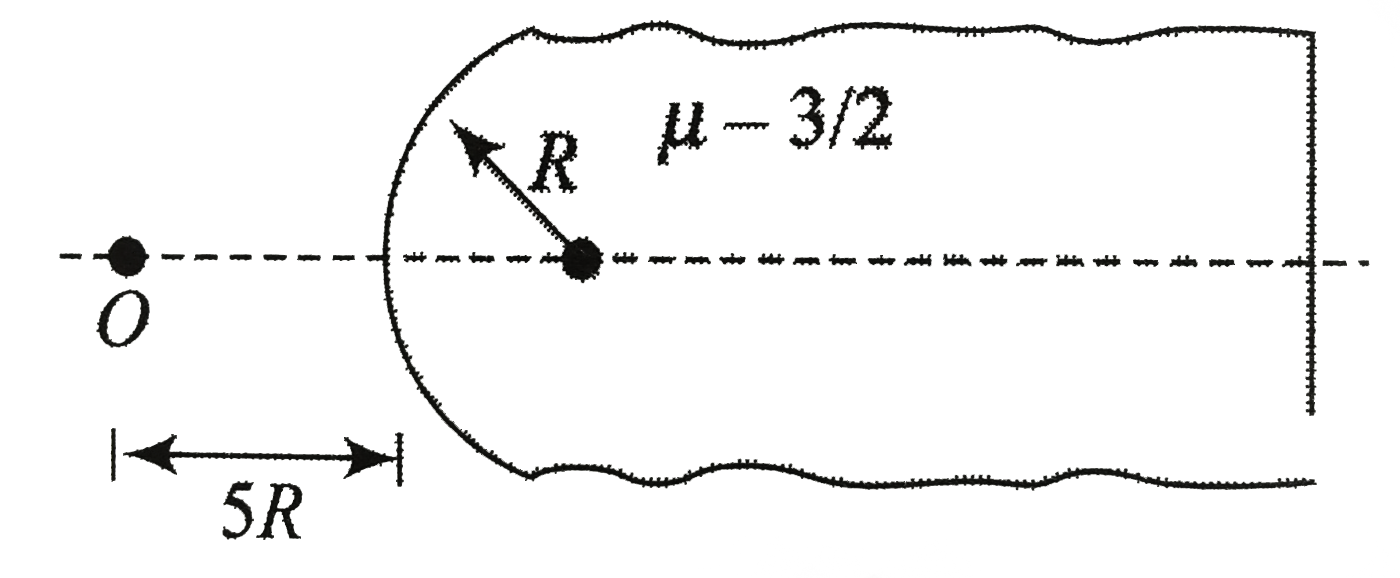
d. In figure, the image of an object O place on the center face of the sphere is formed at infinity,.
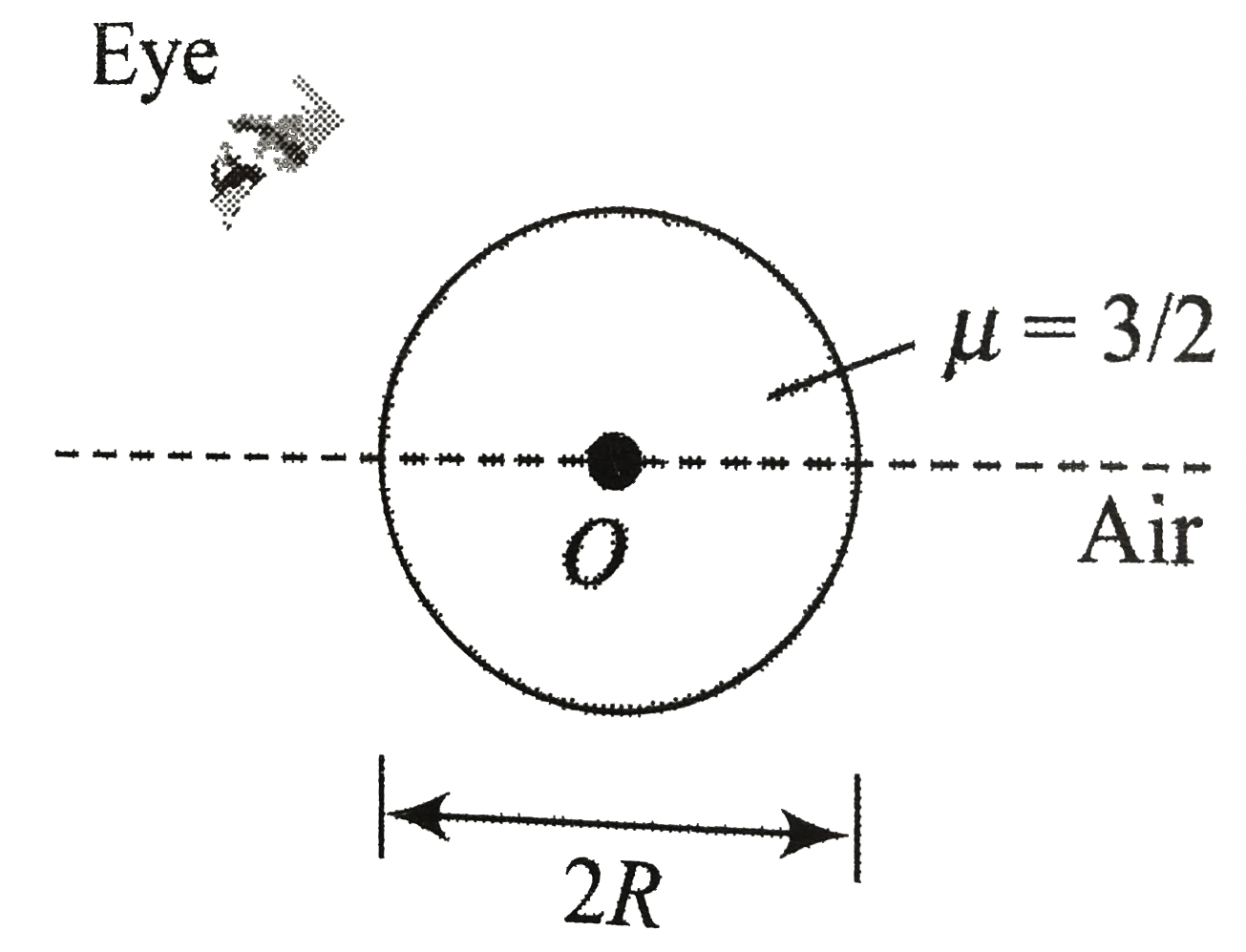
e. In fig , the image of an object O placed on the opposite face of the sphere is foremd at infinity.
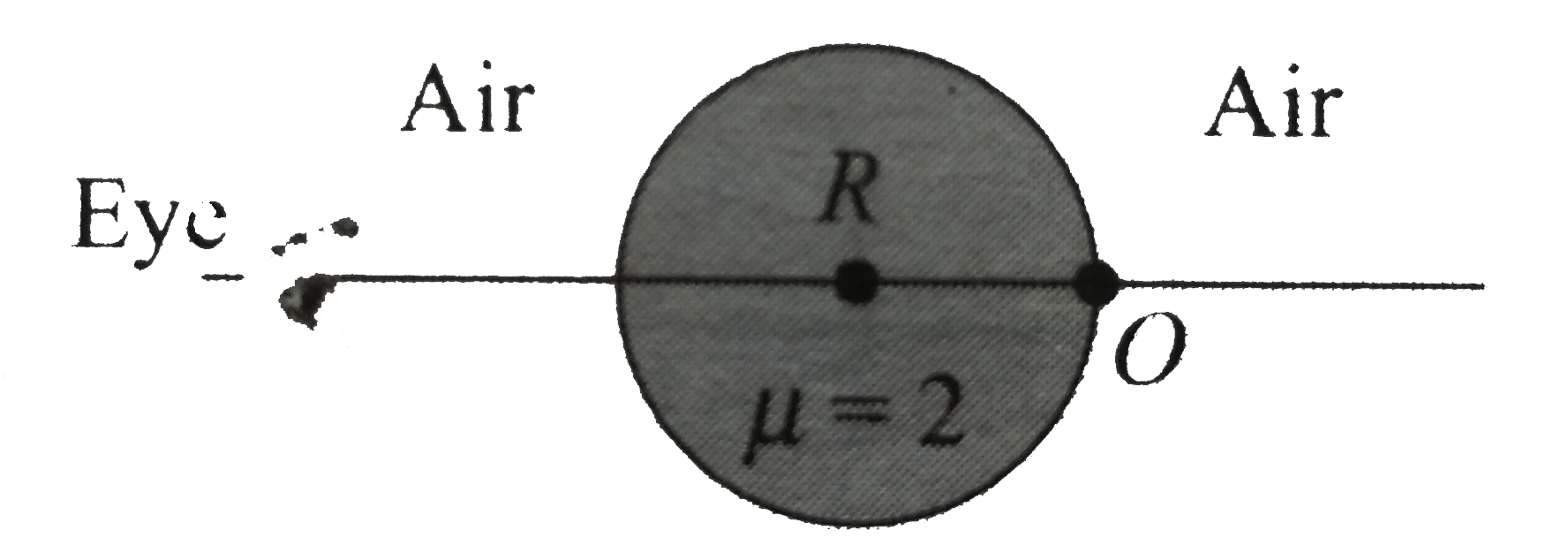 View Solution
View SolutionQuestion 2
One end of a cylindrical glass rod shown in figure, is ground to a hemispherical surface of radius R=20mm.
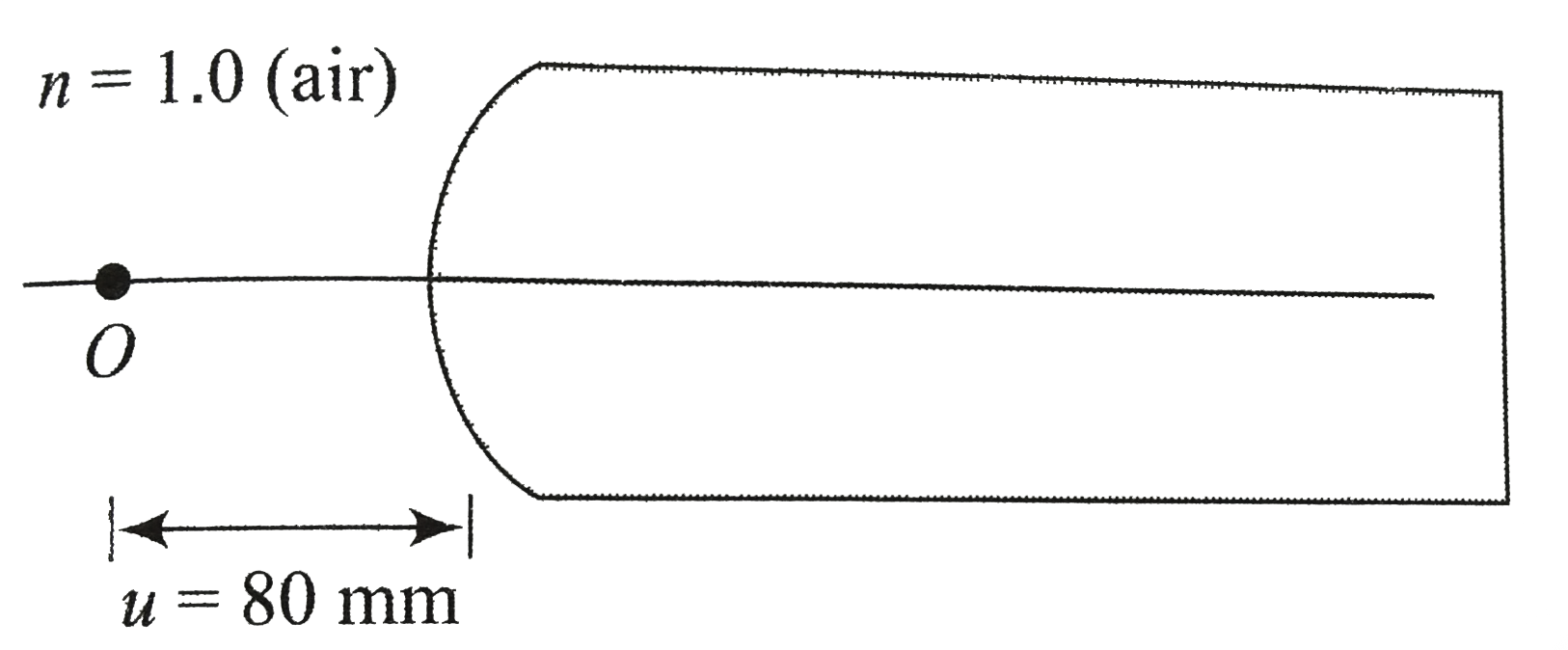
a. Find the image distance of a point object on the axis of the rod, 80mm to the left of the vertex. The rod is in air.
b. Let the same rod be immersed in water of refractive index 4/3 , the other quantities having the same values as before. Find the image distance. View SolutionQuestion 10
One end of a horizontal cylindrical glass rod (μ=1.5) of radius 5.0 cm is rounded in the shape of a hemisphere. An object 0.5 mm high is placed perpendicular to the axis of the rod at a difference of 20.0 cm from the rounded edge. Locate the image of the object and find its height.View SolutionQuestion 12
Figure shows a transparent hemisphere of radius 3.0 cm made of a material of refractive index 2.0. (a) A narrow beam of parallel rays is incident on the hemisphere as shown in the figure. Are the rays totally reflected at the plane surface ? (b) Find the image formed by the refraction at the first surface. (c) Find the image formed by the reflection or by the refraction at the plane surface. (d) Trace qualitatively the final rays as they come out of the hemisphere.
 View Solution
View SolutionQuestion 16
A spherical surface of radius 30 cm separates two transparent media A and B with refractive indices 1'33 and 1.48 respectively. The medium A is on the convex side of the surface. Where should a point object be placed in medium A so that the paraxial rays become parallel after refraction at the surface ?View SolutionQuestion 18
A solid hemispherical bowl of radius R, made of glass, is placed on a flat horizontal surface with its curved surface on the ground. A small object is placed under the hemisphere at the center of the curved surface. If an observer sees the object directly above the plane surface, Where will the object appear to be ?View SolutionQuestion 21
A converging bundle of rays travel from water (refractive index 4/3 ) to glass (refractive index 1.5) through a convex interface of radius 16cm. In the absence of the interface, The rays would have converged to a point 32 cm from the pole of the interface. Where will the rays actually meet after refraction?View Solution

